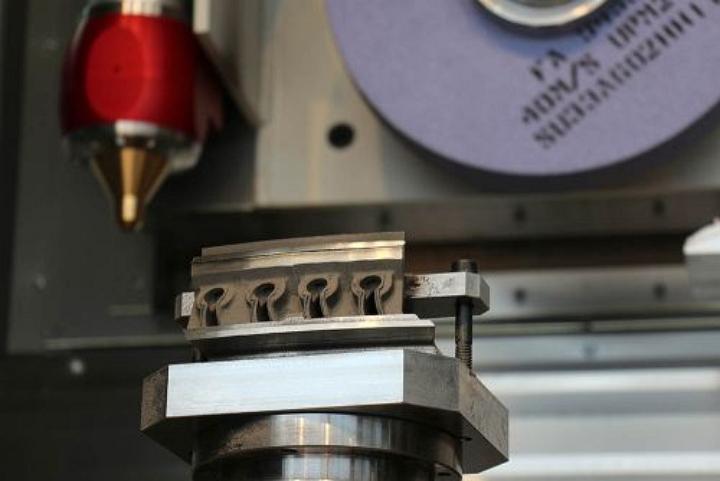 A new generation of hybrid machine tools are combining additive manufacturing capabilities with milling and CNC turning functionality.
A new generation of hybrid machine tools are combining additive manufacturing capabilities with milling and CNC turning functionality.
Now German machine tool maker ELB-Schliff has introduced a grinding machine they say is equipped for additive manufacturing tasks, and this hybrid version of the company’s “millGrind” device is aimed at aerospace engine part production.
The millGrind features both subtractive – via grinding and milling processes – and additive laser cladding to generate precise, complex, critical end-use components from aerospace alloys within a single production cycle.
A laser metal deposition system from Hybrid Manufacturing Technologies is integrated into the machine, and the companies say the millGrind represents the world’s first hybrid grinder system.
They say CNC grinding and metal additive manufacturing, both high-value processes typically performed with high-end machines, complement each other as processes.While design features produced additively often require surface finish improvement, grinding excels at exactly that sort of application.
“Grinding particularly excels in cost-effectiveness for processing materials that are difficult to machine, such as nickel-based superalloys,” says ELB-Schliff. “The millGrind runs conventional grinding abrasives with superabrasive capability, and has an XYZ resolution of 0.1 micron. If hybrid milling takes additive manufacturing to a new level of productivity, then hybrid grinding takes additive manufacturing to a new level of precision.”
The company recently demonstrated their hybrid grinder device during the Paris Air Show, and that machine featured the optional additive manufacturing head within an automatic tool changer. The millGrind is said to offer grinding, boring, milling, laser cladding and on-machine measurement as well, and the machine shown in Paris was fitted with the Hybrid Manufacturing Technologies Ambit laser melting head developed in the UK.

The HMT metal deposition AM process – similar to welding – uses powdered metal blown onto a substrate via an inert carrier gas which is then melted by a laser. Using either of two nozzles for deposition 1.6 mm or 3 mm wide at deposition rates of 10-15 grams minute, the makers say the process is well suited to scaling up in size and speed.
Unlike the most common metal printing technique which uses a powder-bed method, the HMT method more closely approximates traditional subtractive machining processes. The AM head, sold in Europe and the US, is an example of the AM-on-CNC business Hybrid Manufacturing Technologies uses to retrofit existing CNC machines, and as of May, they say the process has been used to retrofit 10 units.
Elb-Schliff Werkzeugmaschinen GmbH and aba Grinding Technologies GmbH now operate under the AUTANIA GRINDING TECHNOLOGIES umbrella.
Subscribe to Our Email Newsletter
Stay up-to-date on all the latest news from the 3D printing industry and receive information and offers from third party vendors.
You May Also Like
Precision at the Microscale: UK Researchers Advance Medical Devices with BMF’s 3D Printing Tech
University of Nottingham researchers are using Boston Micro Fabrication‘s (BMF) 3D printing technology to develop medical devices that improve compatibility with human tissue. Funded by a UK grant, this project...
3D Printing Webinar and Event Roundup: April 21, 2024
It’s another busy week of webinars and events, starting with Hannover Messe in Germany and continuing with Metalcasting Congress, Chinaplas, TechBlick’s Innovation Festival, and more. Stratasys continues its advanced training...
3D Printing Webinar and Event Roundup: March 17, 2024
It’s another busy week of webinars and events, including SALMED 2024 and AM Forum in Berlin. Stratasys continues its in-person training and is offering two webinars, ASTM is holding a...
3D Printed Micro Antenna is 15% Smaller and 6X Lighter
Horizon Microtechnologies has achieved success in creating a high-frequency D-Band horn antenna through micro 3D printing. However, this achievement did not rely solely on 3D printing; it involved a combination...






























